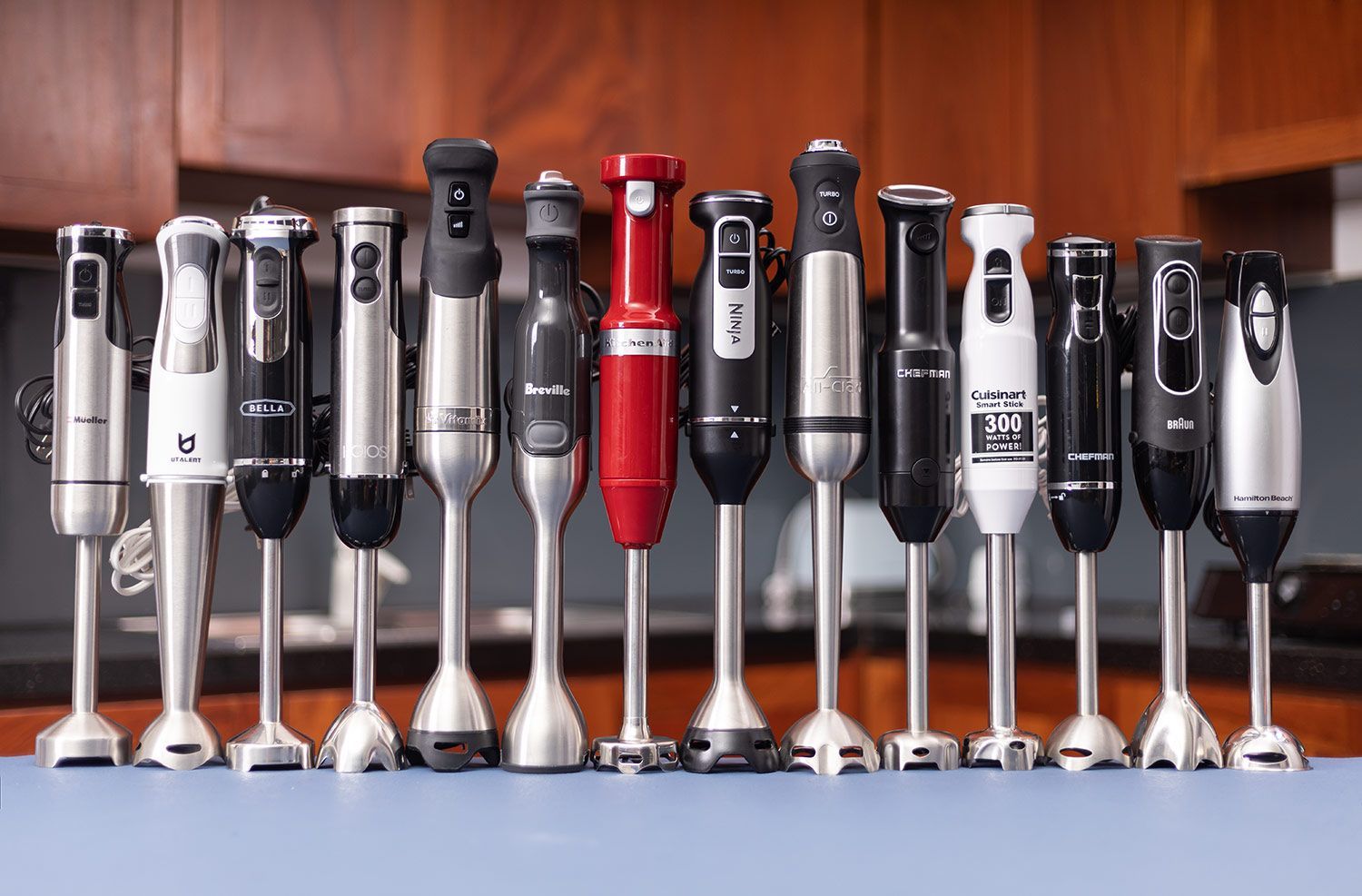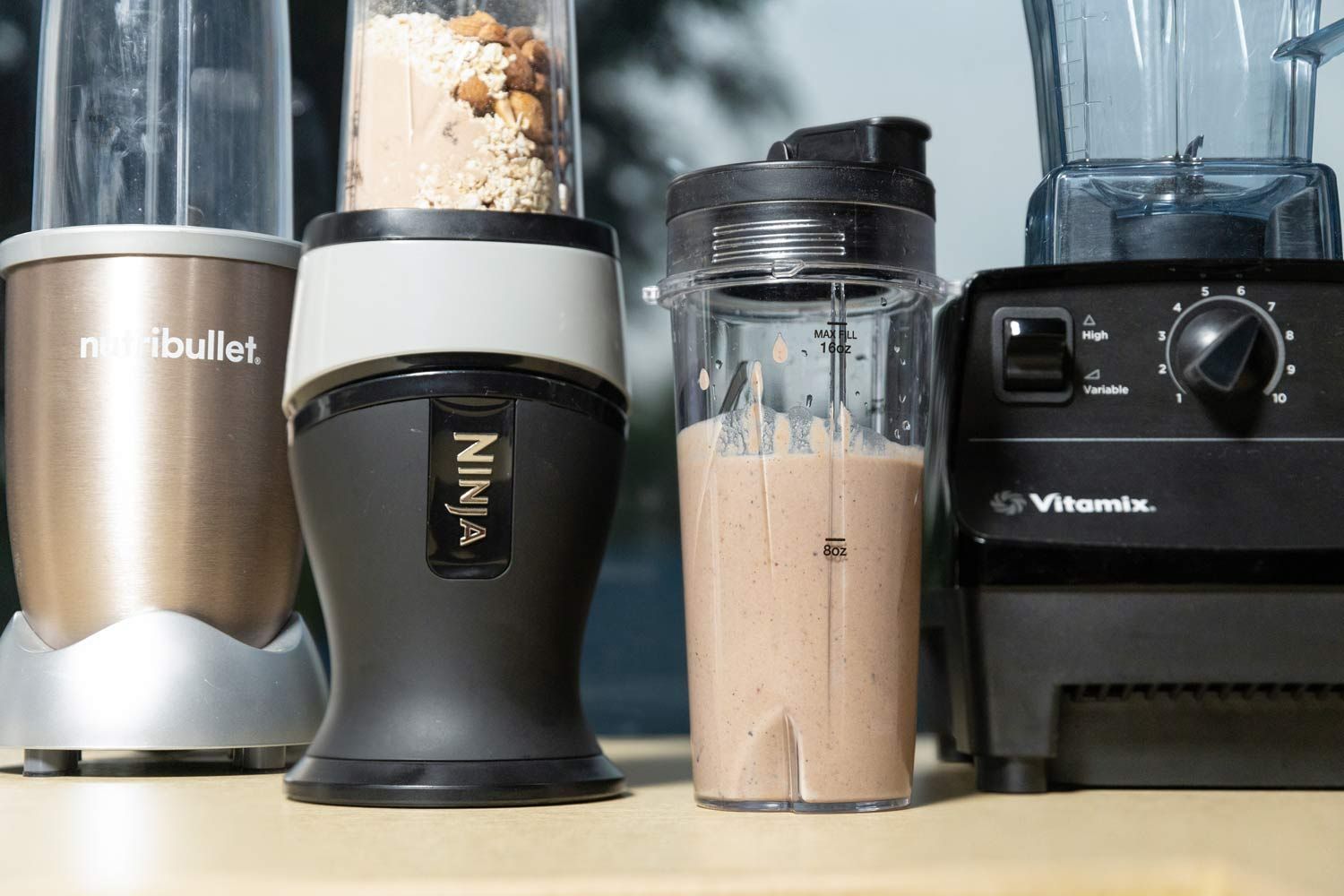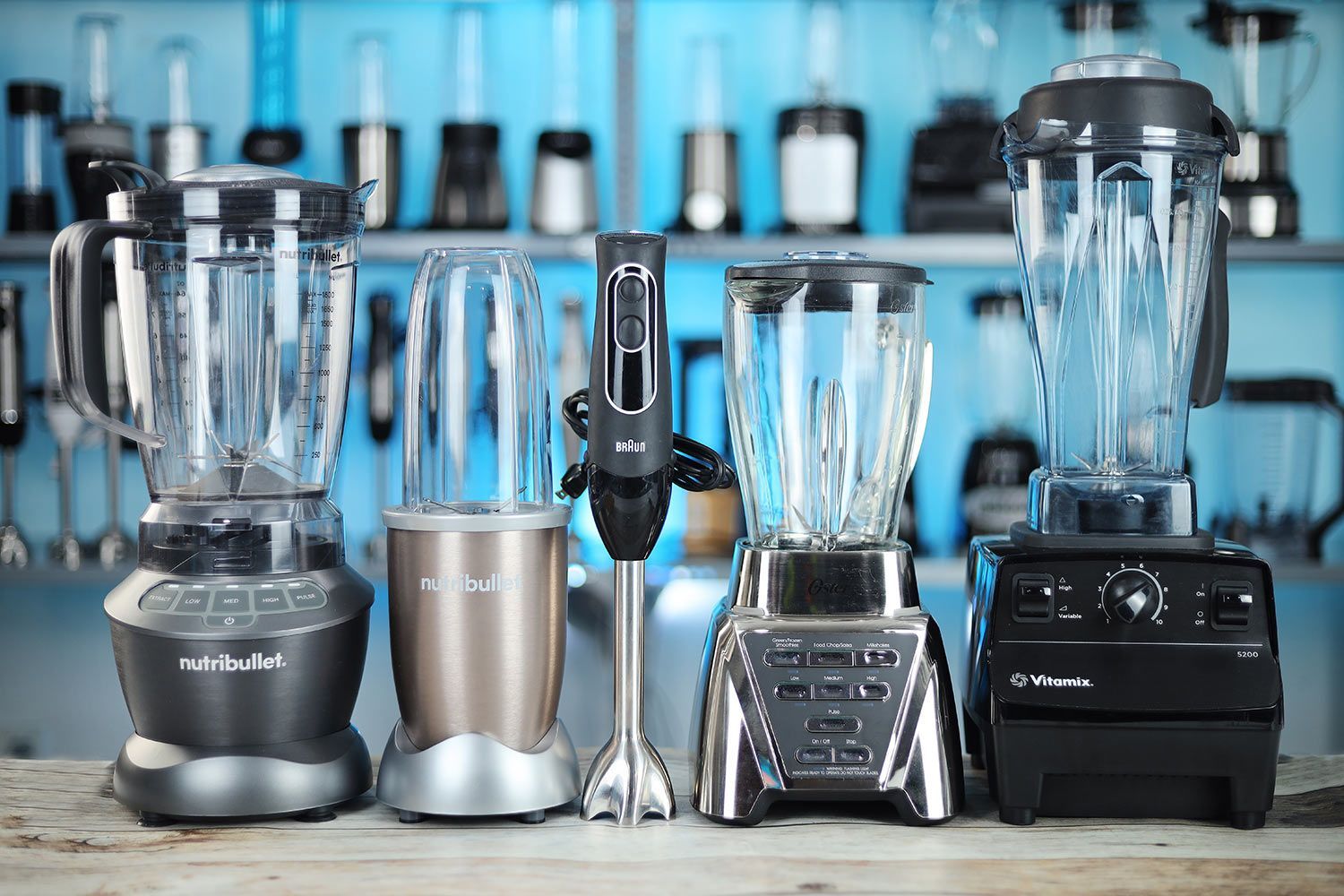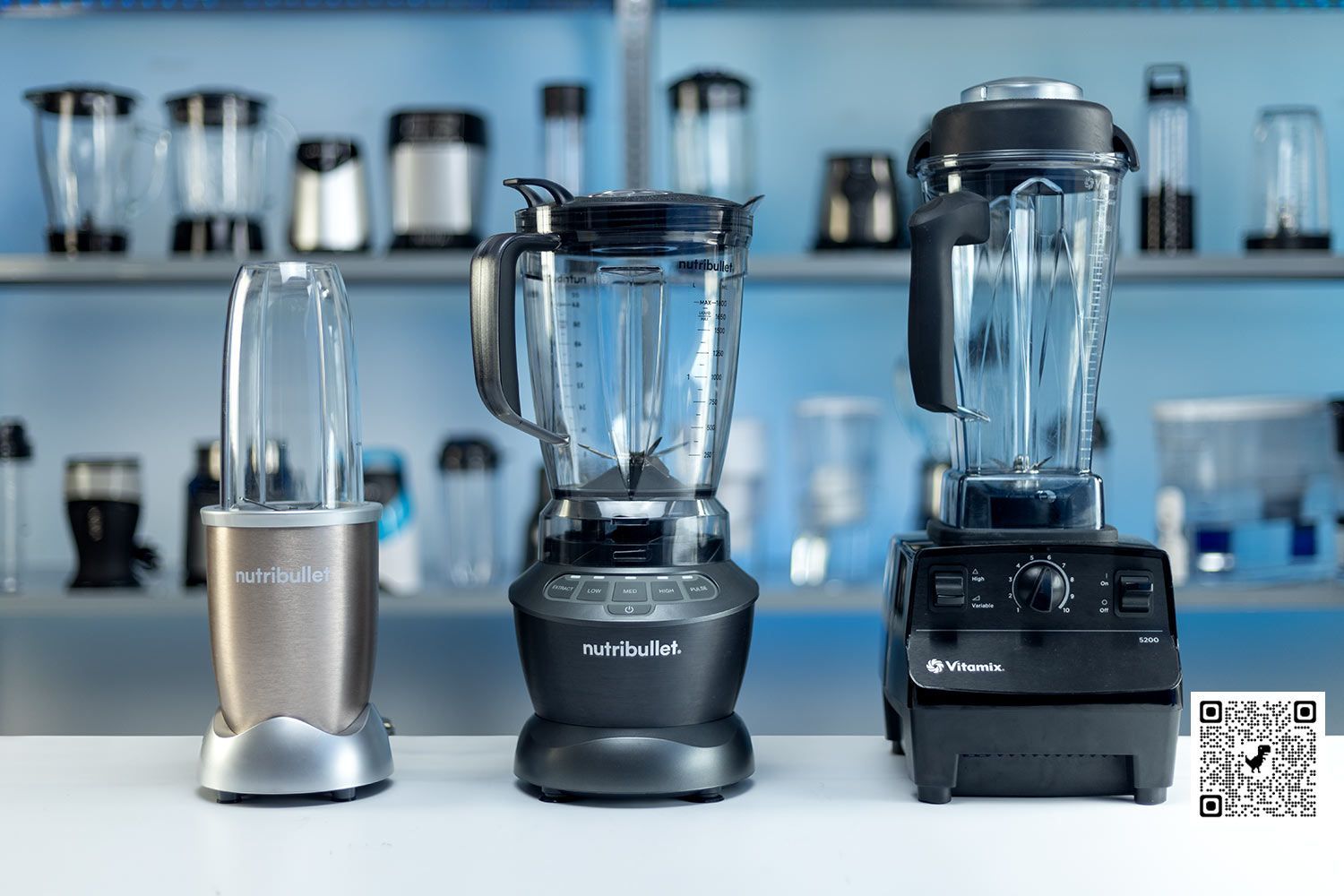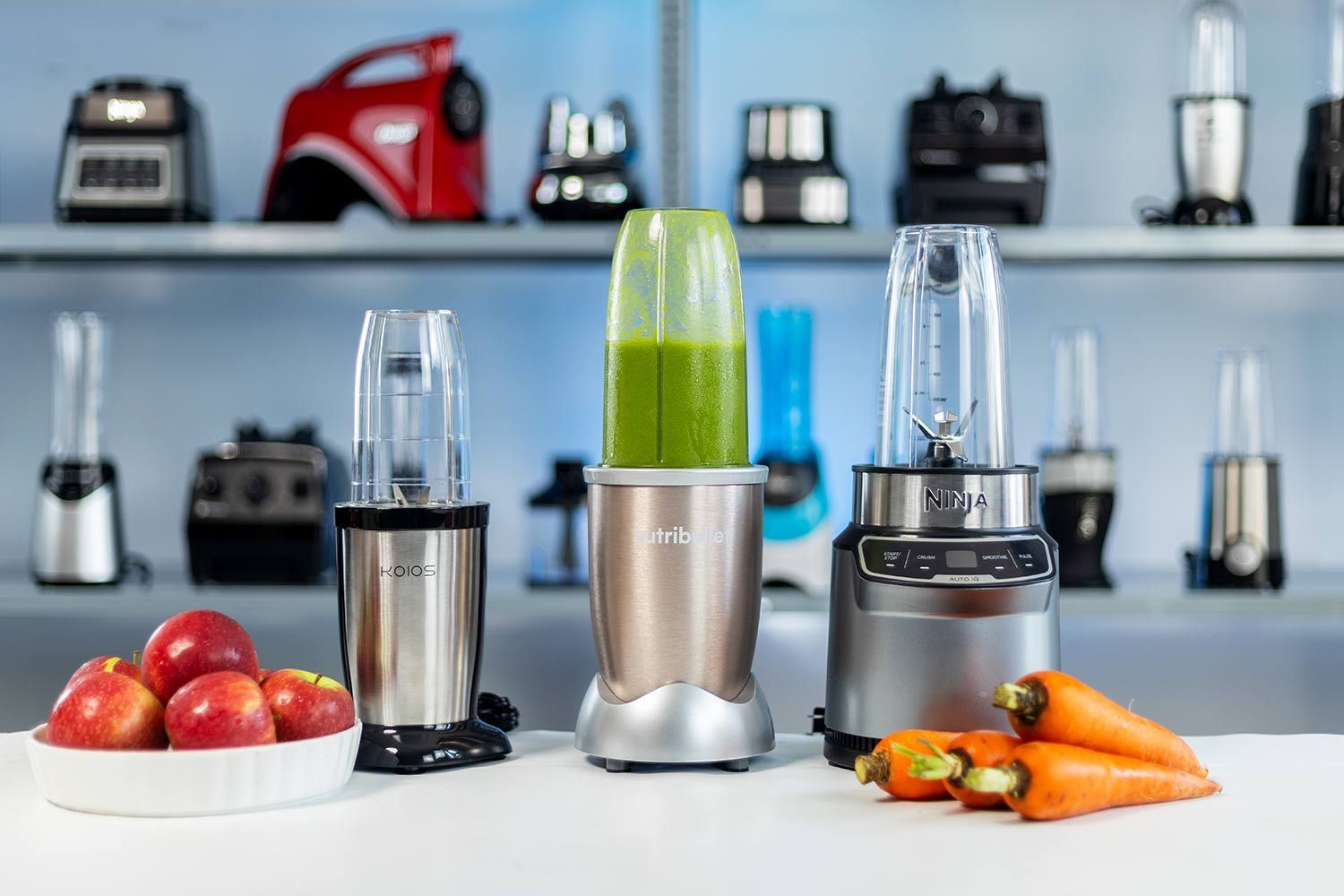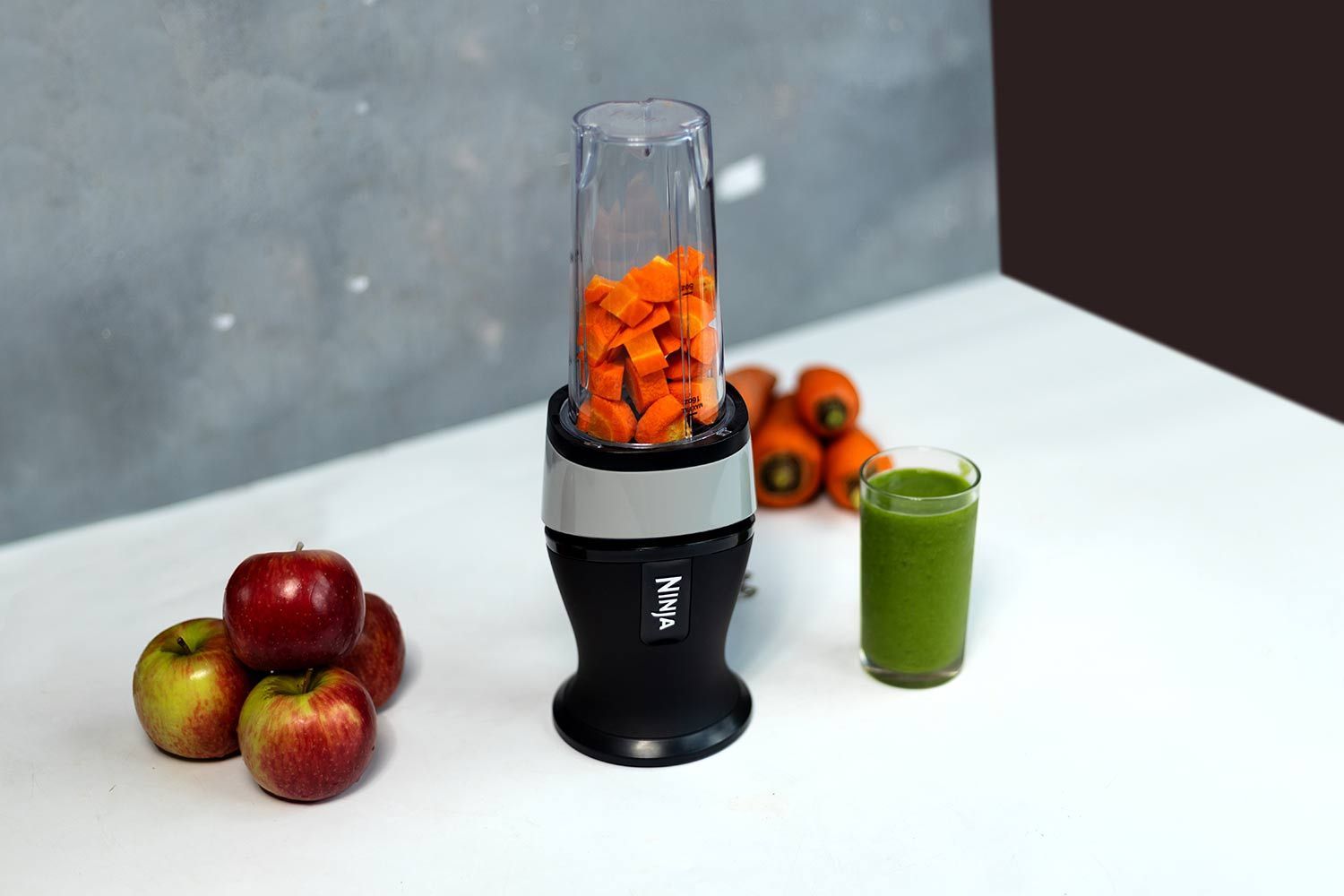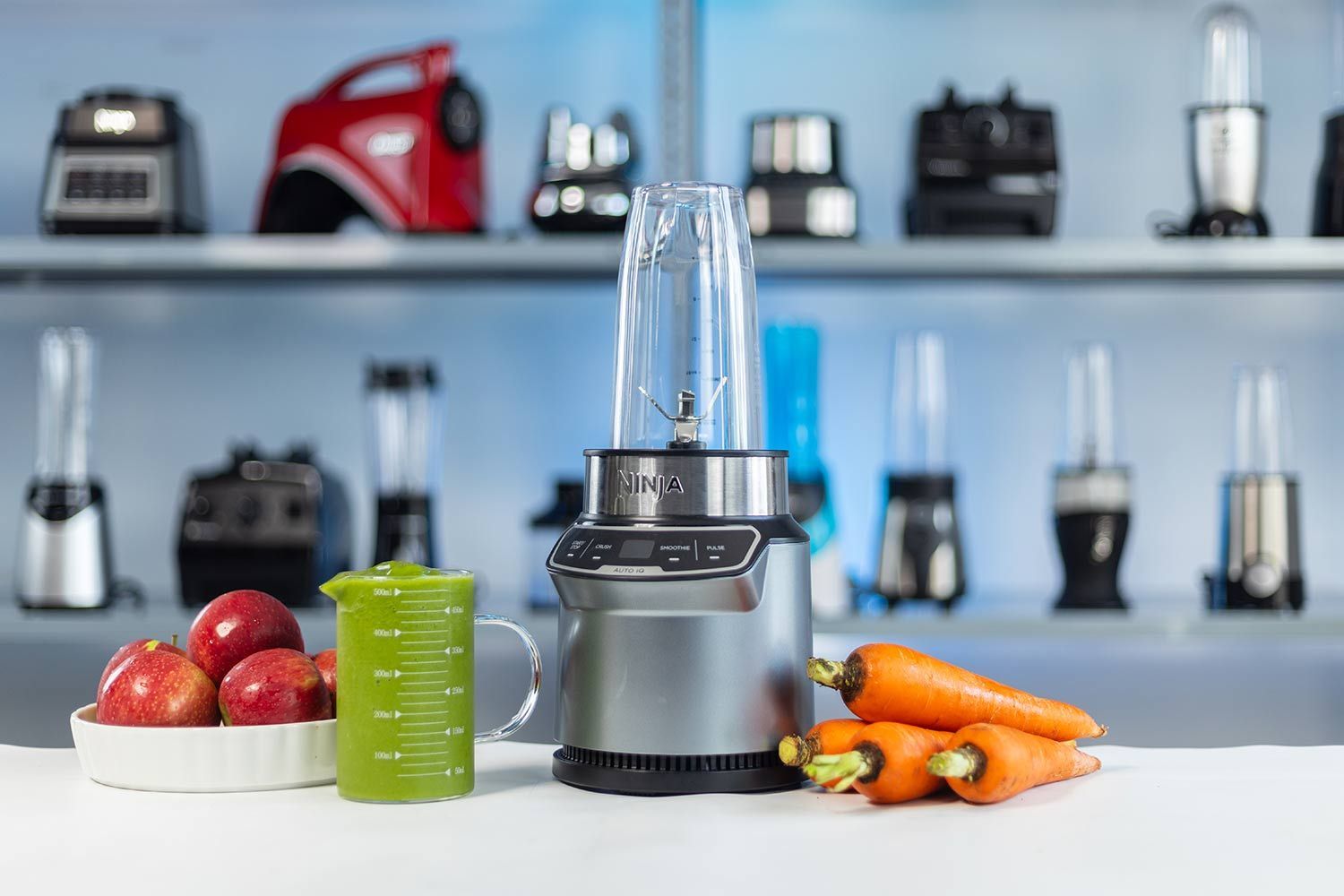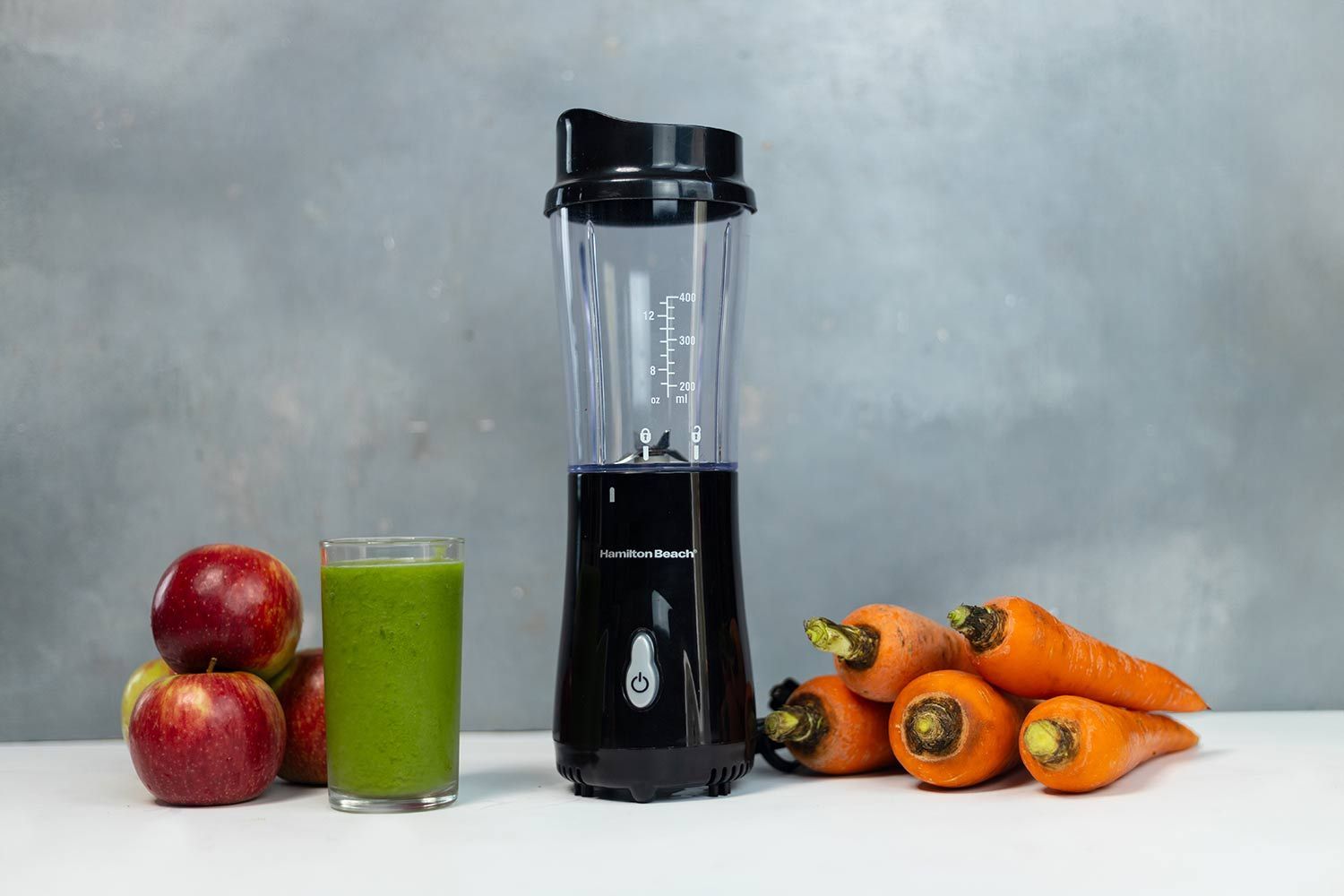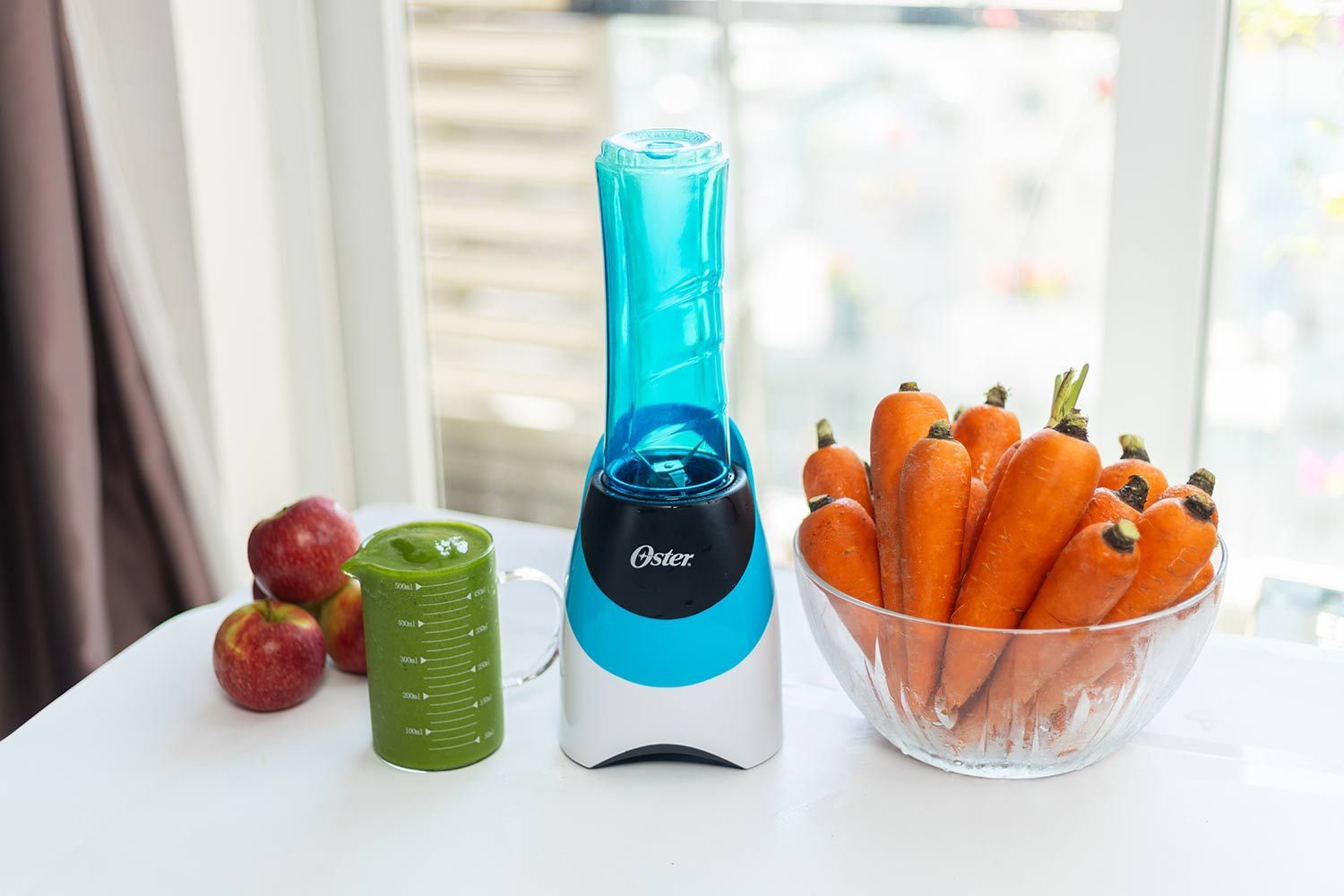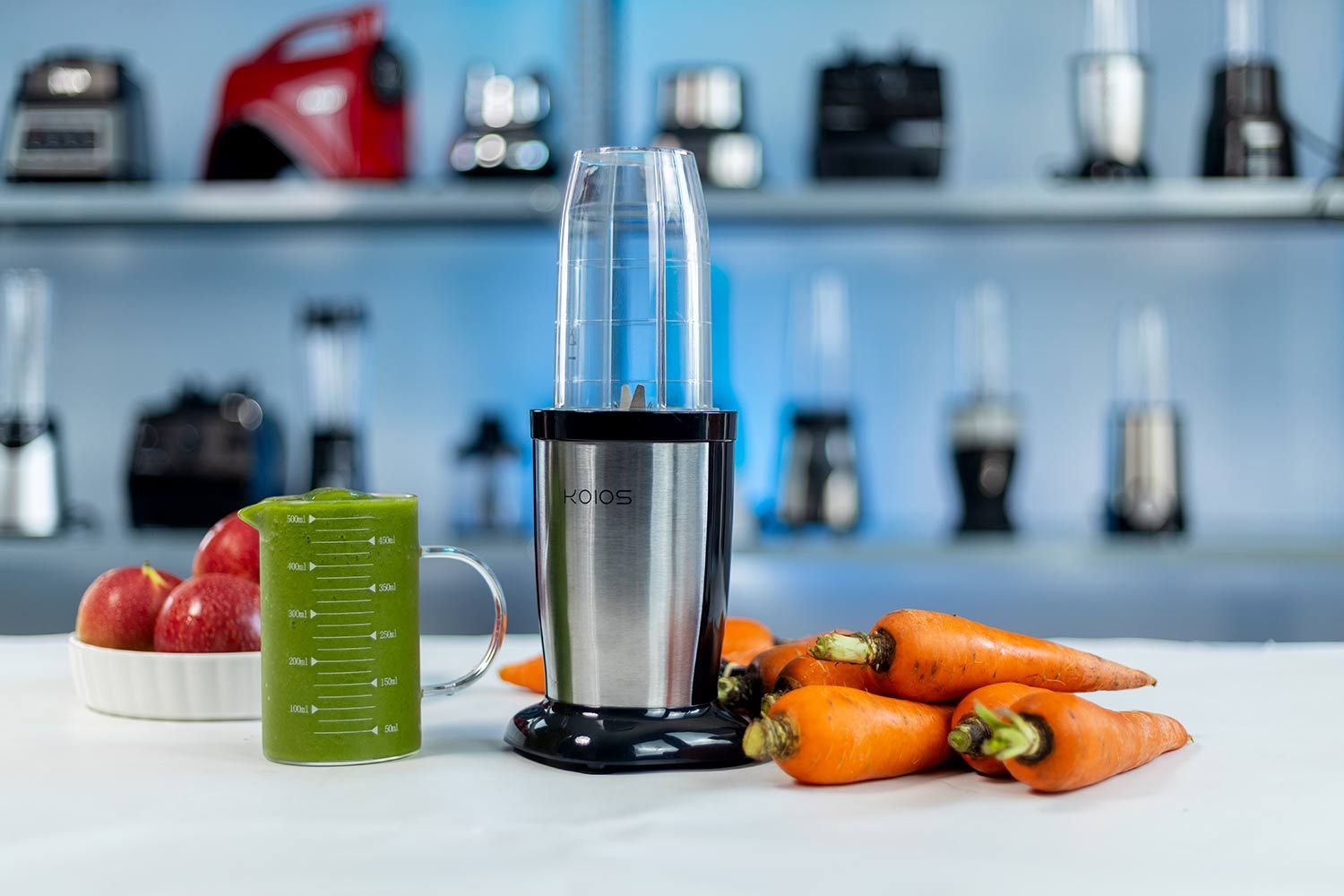The Best Personal Blenders Tested & Reviewed

We live in a world where wellness has become wonderfully portable. From gym bags to office drawers, healthy smoothies and protein shakes have become as mobile as we are. That’s where personal blenders come in—compact and powerful, they’ve changed the way we think about eating healthy on the move.
With so many models on the market, all claiming top performance, we've done the hard work of testing a variety of models to help you find the best personal blender for your needs. After thorough evaluation, we found the Ninja Fit to be the top choice, considering its powerful performance, impressive portability, and unbeatable price. If you need more power and a bigger capacity, the NutriBullet Pro 900W is an equally excellent option, though it’s a bit pricier.
Everything We Recommend
The Ninja Fit QB3001SS is an excellent personal blender that punches above its weight class. Don't let its compact size and affordable price tag fool you. We've tested numerous models over the years, but none have impressed us quite like this Ninja in terms of power, versatility, and overall value.
If you often find yourself making two or more servings at once, the NutriBullet Pro is designed to rise to the challenge. While it doesn’t claim the very top spot in our rankings, this sleek, high-quality blender certainly holds its own and is anything but a second-rate choice. In fact, it even outperformed the Ninja in some areas.
At around $30, the La Reveuse proves itself capable where it counts. It handles frozen fruits, leafy greens, and oatmeal, surprisingly well, creating smooth, consistent smoothies without much fuss. However, don't expect it to crush ice cubes; that's asking a bit too much from this price range.
Designed for personal use and on-the-go convenience, the PopBabies should be a nice addition to your outdoor kit. Whether you’re in need of a quick smoothie, baby food preparation, or a simple snack during a picnic or camping trip, this blender definitely has you covered.
How We Test
We developed comprehensive testing protocols based on real-world usage patterns. Each blender undergoes four core blending tests:

- Protein Shake: A challenging mixture of protein powder, dried blueberries, oatmeal, almonds, and milk evaluates the blender's ability to create silky-smooth drinks. The ingredients are blended until fully smooth, with particular attention paid to ensuring the oatmeal is completely liquefied to prevent any graininess.
- Frozen Fruit Smoothie: Using a combination of milk, honey, yogurt, and four types of frozen fruit, we assess each blender's power and consistency. Units must achieve smooth results within 2 minutes, with periodic checks every 20 seconds to ensure thorough blending.
- Green Smoothie: We evaluate how well each model processes tough, fibrous ingredients like kale, spinach, and celery—a true test of blade design and motor strength.
- Ice Crushing: This test measures the blender's raw power and blade effectiveness by crushing standard ice cubes.
The final aspect of our testing focuses on Design quality and Usability. We assess everything from blade construction to ease of cleaning. For a comprehensive overview of our testing standards, check out our detailed guide on How We Test and Score Our Personal Blenders.
How We Choose
Our recommendations are based on thorough testing, with the best-performing and user-friendly models taking the top spots. In addition to this, we also factor in the price, customer feedback, and brand trustworthiness to ensure you're getting the most value for your money.
Ninja Fit QB3001SS Personal Blender
Best to Buy
The Ninja Fit QB3001SS is an excellent personal blender that punches above its weight class. Don't let its compact size and affordable price tag fool you. We've tested numerous models over the years, but none have impressed us quite like this Ninja in terms of power, versatility, and overall value.
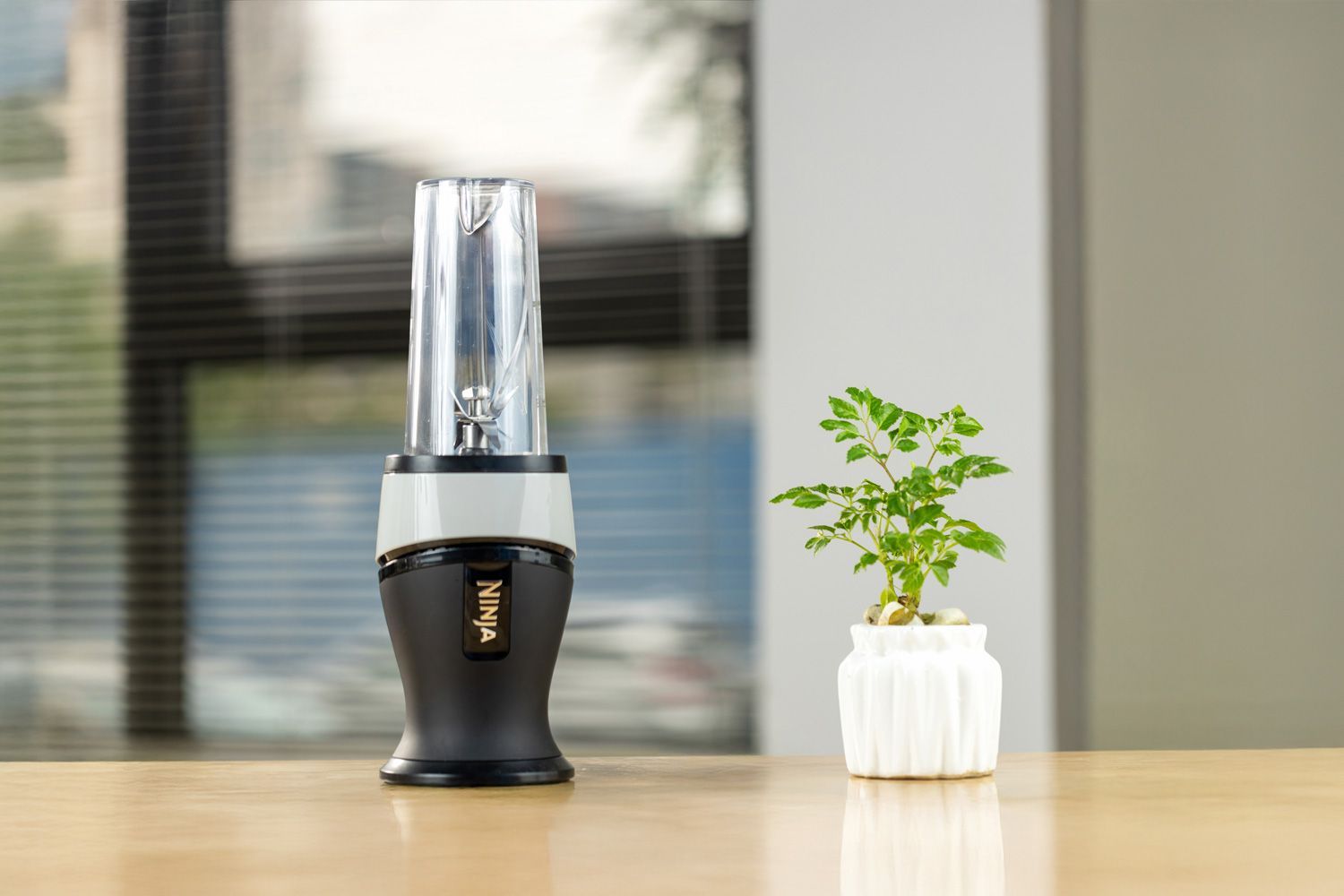
Things We Like
- Excellent for blending fibrous, frozen, or tough ingredients
- User-friendly design; simple to use and assemble
- High-quality and affordable
- Dishwasher-safe parts and simple manual cleaning
Things We Don’t Like
- Press-to-blend mechanism; not hands-free
Performance is where the blender really shines. Its 700-watt motor and heavy-duty blades allow it to blitz through frozen fruits, fibrous veggies, and raw nuts without even a struggle. Certainly, the results are always ultra-smooth blends with hardly any chunks to speak of.
It can even turn ice cubes into fluffy snow, perfect for frosty cocktails or snow cones—a rare find among personal blenders at this price point. However, like most narrow-cupped personal blenders, you may need to occasionally shake the cup to dislodge ingredients for optimal blending. But overall, performance is top-notch.
Regarding durability, we've been using the Ninja Fit regularly in our test kitchen for over two years, and it still performs as flawlessly as day one. The motor shows no signs of weakening, and the blades remain incredibly sharp. Plus, with Ninja's reputation for quality and reliable customer service, we feel confident that this blender is built to last.
Some users complain about the noise. Still, the noise level is actually on par with most personal blenders and certainly not a dealbreaker considering its exceptional performance.
Cleaning is a snap, thanks to its dishwasher-safe components. For quick manual cleanups, just blend some warm, soapy water in the cup, and rinse thoroughly. The only minor inconvenience is that the tight spaces beneath the blades can sometimes be a bit tricky to wipe clean. Nonetheless, this is a common issue with all models, so it's nothing out of the ordinary.
Read our full Ninja Fit QB3001SS Personal Blender in-depth review
NutriBullet Pro 900W Personal Blender
Upgrade Pick
If you often find yourself making two or more servings at once, the NutriBullet Pro is designed to rise to the challenge. While it doesn’t claim the very top spot in our rankings, this sleek, high-quality blender certainly holds its own and is anything but a second-rate choice. In fact, it even outperformed the Ninja in some areas.
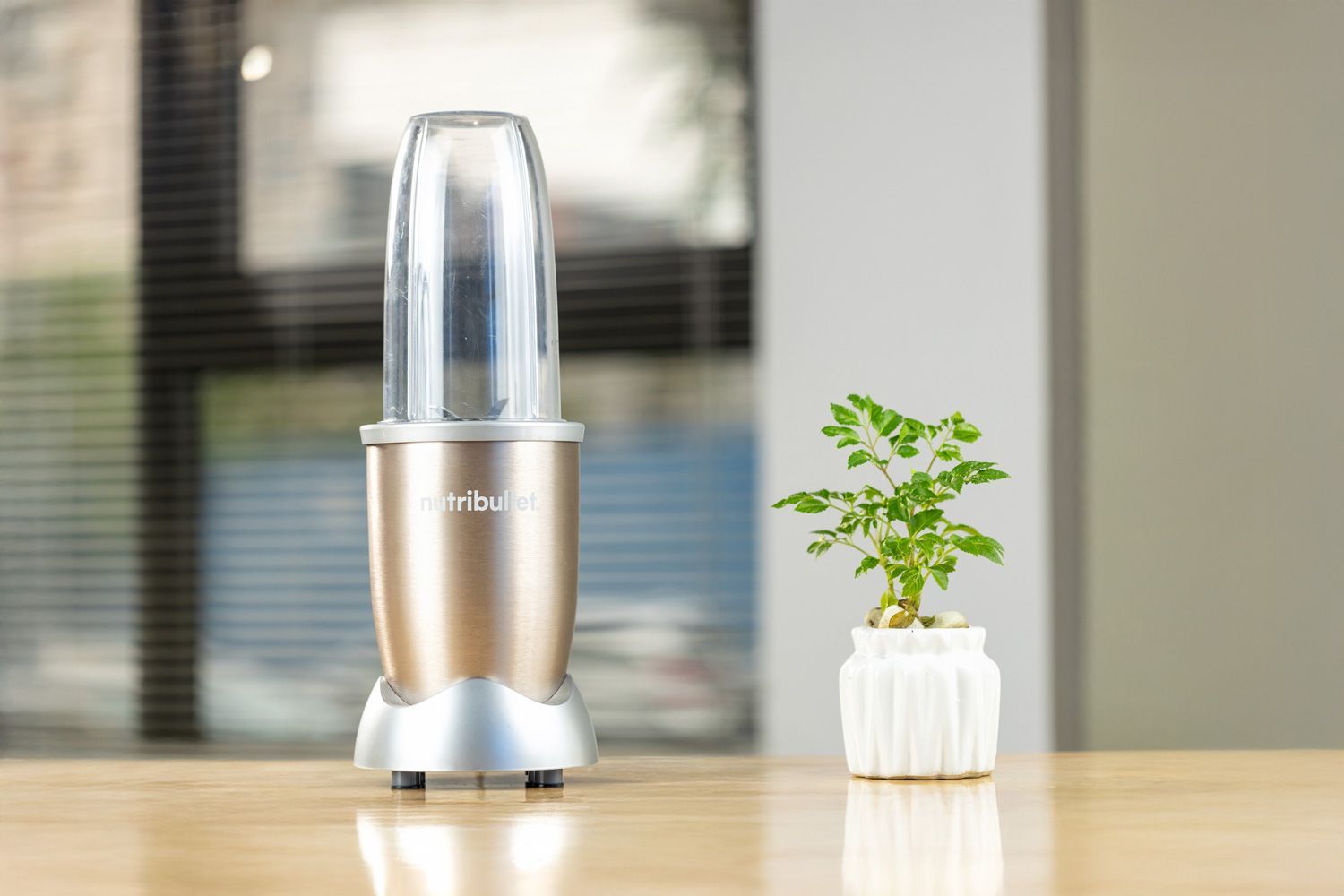
Things We Like
- Exceptional blending capabilities across a wide range of tasks
- Convenient hands-free operation
- Top-tier build quality
- Reliable warranty & customer support
Things We Don’t Like
- Pricier
- A few challenging-to-clean spots
Particularly, the NutriBullet excelled in both protein shakes and ice crushing, whipping up smooth fruity blends and snow-like ice in just under a minute—something no other blender we tested could match. When it came to crushing frozen fruit for smoothies, it delivered a velvety elixir in just 50 seconds. Its ability to liquefy leafy greens is nothing short of remarkable, too.
Compared to the top pick, the NutriBullet has a larger blending cup (32 oz), giving ingredients more room to move around, so it works almost entirely on its own. This size, however, makes it less convenient for drinking straight from the cup. For gym-goers who want something more portable and easy to take with them, the Ninja Fit offers a more convenient, on-the-go option.
A few reviewers mentioned the gasket coming loose during blending, with one even reporting it getting chewed up by the blades in a whirling frenzy. We didn’t run into this issue during our tests, so it seems likely to be user error from not properly attaching the gasket. A modicum of care in assembly should keep this issue at bay.
There's also users saying their blenders last up to 10 years. Given its track record, we believe that’s entirely possible. Impressively enough, this durability is backed by NutriBullet's excellent customer service—if any issues come up, their team swiftly troubleshoots and sends replacement parts, no questions asked, as long as it’s within the warranty period.
The NutriBullet's biggest drawback is its cup design with four plastic ridges that can trap residue. A good soak in hot soapy water and a vigorous scrub with a bottle brush usually gets it clean, but some picky users break out the toothpicks. The lid design also has some nooks and crannies that require a bit of extra attention to clean. Overall though, we didn't find it to be a major issue.
Read our full NutriBullet Pro 900W Personal Blender in-depth review
La Reveuse Personal Blender
Best Value
At around $30, the La Reveuse proves itself capable where it counts. It handles frozen fruits, leafy greens, and oatmeal, surprisingly well, creating smooth, consistent smoothies without much fuss. However, don't expect it to crush ice cubes; that's asking a bit too much from this price range.
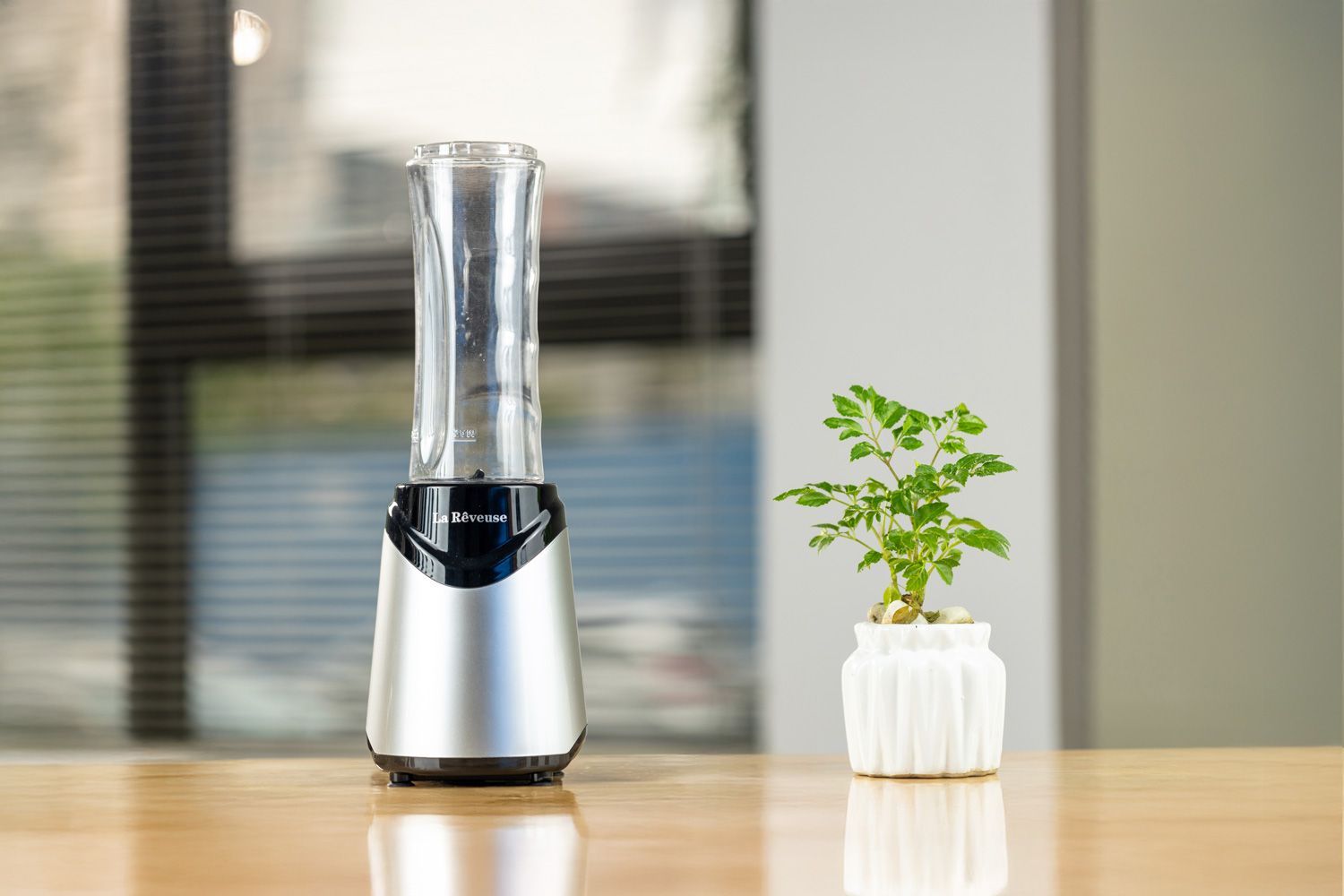
Things We Like
- Smooth blending for basis tasks
- Affordable price with additional accessories
- Reasonable durability
- Easy to use
Things We Don’t Like
- Limited ice crushing capability
- Quiet challenging to clean due to the long, narrow cup design
- Hand wash only
We particularly like the blender’s hands-free operation design—once you lock the cup in place, it keeps running until you remove it. This sounds convenient, but there's a catch: you'll often need to pause and shake the contents because the long, slim shape of the container creates a tight space where ingredients can often get trapped in 'dead zones' away from the blades, especially thicker mixtures that need more room to circulate.
Getting to the bottom of the cup can be challenging too, whether you're stirring or cleaning. A long spoon or bottle brush is essential to make these tasks easier. It’s also important to remember that hot water and dishwashers aren't friendly to these cups. Hand cleaning is non-negotiable.
The package includes two blending cups with travel lids, which adds nice value. The build quality is decent for the price point. Of course, it doesn't feel as premium as more expensive models. For long-term durability, our understanding is limited, but one user did mention her blender lasted her an impressive four years with frequent use.
There have been occasional complaints about a faint burning smell when the blender is used for the first time. This is normal and happens as the motor's protective coating needs to "break in." To avoid this, it's recommended to run the blender empty for a few 30-second intervals before first use.
Is this personal blender perfect? Not at all. But as a mid-range model, the La Reveuse delivers reliable performance for basic blending needs. It's ideal for someone looking to make simple blends without breaking the bank. Just keep your expectations in line with its budget-friendly nature, and you'll likely be satisfied with what it offers.
Read our full La Reveuse Personal Blender in-depth review
Popbabies Portable Blender
Best Portable
Designed for personal use and on-the-go convenience, the PopBabies should be a nice addition to your outdoor kit. Whether you’re in need of a quick smoothie, baby food preparation, or a simple snack during a picnic or camping trip, this blender definitely has you covered.
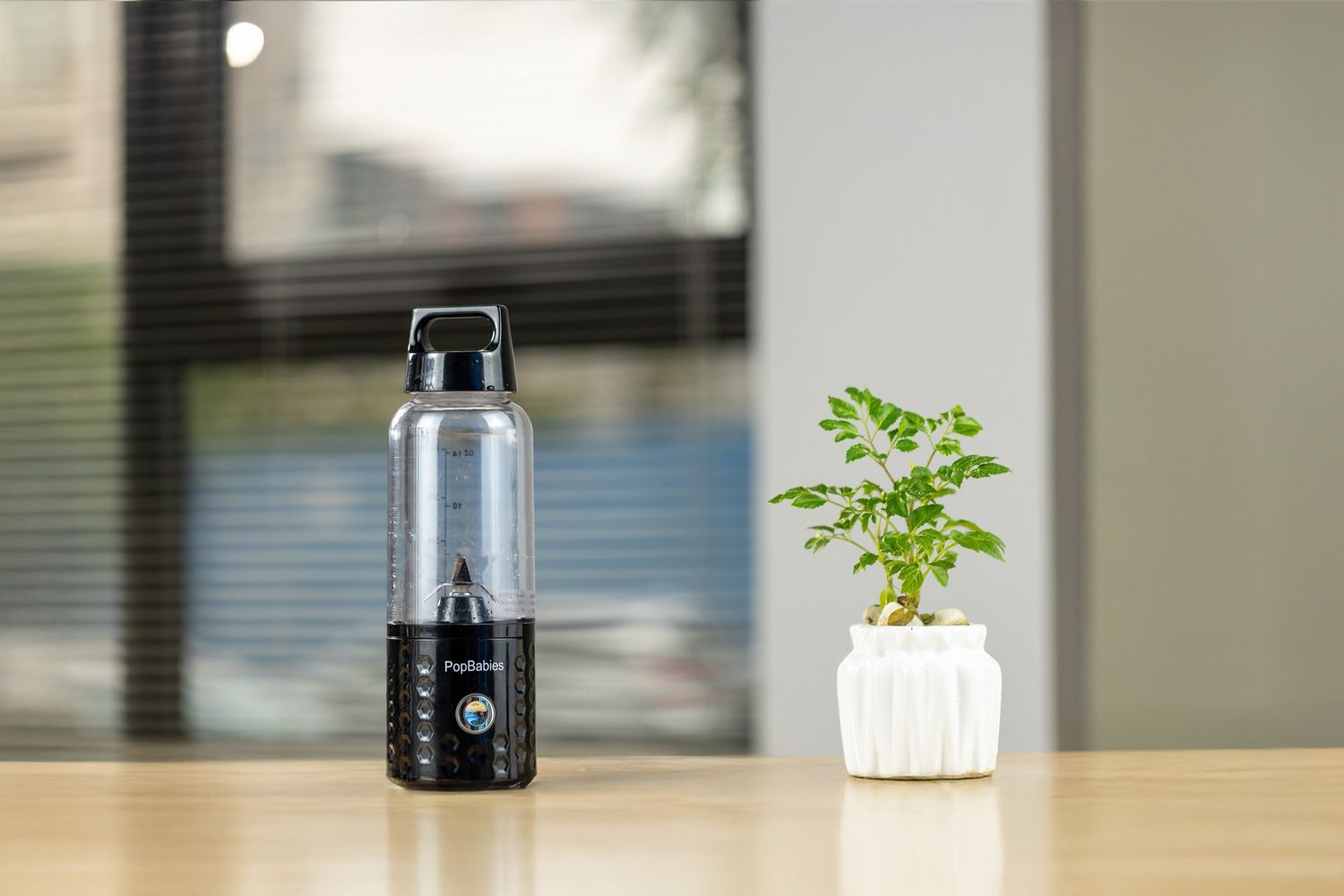
Things We Like
- Ultimate portability with battery-powered convenience
- Moderate blending power for everyday ingredients
- Glass jar for safe pureeing
- Dishwasher safe components
Things We Don’t Like
- Not ideal for high-volume use
- Challenging blade cleaning
Its key features include the 250W motor and three high-quality lithium batteries—the combination that provides enough power for over 40 blends on a single charge. This means you can rely on it for multiple uses throughout the day without worrying about running out of power.
During our tests, the PopBabies demonstrated moderate success in blending oatmeal, soft fruits, and leafy greens like spinach and celery. While it can technically handle frozen ingredients, success depends heavily on proper preparation—pieces must be cut into smaller chunks, and batches should be limited in size.
Most cordless personal blenders come with plastic cups, but the PopBabies is equipped with a heat-resistant glass jar. This feature allows you to safely blend hot liquids—whether it’s soup, tea, or freshly brewed coffee—without the risk of warping or chemicals leaching from the container.
Design-wise, the PopBabies is compact and lightweight. That said, battery-powered models like this typically don’t match the longevity or sturdiness of their corded counterparts. Over time, the battery may hold less charge, so unless portability is your top priority, we suggest considering a corded model for better long-term durability.
You can safely put the lid, funnel, and cup in the dishwasher (top rack), but hand washing with warm, soapy water is recommended to keep them in better condition. Cleaning the blade, however, is a bit of a hassle. Unlike other personal blenders with removable blade assemblies, the PopBabies has a fixed blade attached to the cup. This design helps prevent leaks, but the fixed blade limits access to tight spaces, making it difficult to reach the undersides and corners where food can get trapped. A bottle-cleaning brush is a must here.
Read our full Popbabies Portable Blender in-depth review
The Competition
- Ninja Nutri Pro Compact (BN401): With strong performance and high-quality build, this blender excels in many areas. However, its higher price and advanced features, which may not be necessary for all users, kept it from being our top pick.
- Ninja Nutri Auto-iQ: Despite the range of features, this blender falls short in terms of performance for its cost. Plus, it’s somewhat bulky, demands a learning curve, and incorporates a lot of gimmicky features that don’t necessarily enhance its overall performance.
- KOIOS Pro: This mid-range blender delivers comparable results to the La Reveuse and comes with a higher price tag. But in return, you’ll get a range of accessories that expand its versatility.
- BLACK+DECKER FusionBlade: A well-known name in kitchen appliances brings us this capable personal blender. Though it struggles with ice crushing, it performs adequately for other basic blending tasks. We particularly love its sleek, sporty design.
- BELLA Rocket: Not as widely recognized as other personal blenders and far from competing with the top-tier models, this blender still manages to handle everyday blending tasks with acceptable results. Plus, the build quality is basic but appropriate for its price range.
Factors to Consider
When scouting for a personal blender, focus on these practical points to fit your active lifestyle:
- Motor Power: Opt for 175-400 watts for soft ingredients, 400-700 watts for tougher tasks like crushing ice, or 700+ watts for heavy-duty blending.
- Speed Settings: Simple one-touch operation is standard; models with pre-programmed settings offer more versatility but can be costlier.
- Size and Capacity: Select a compact model with a 16-to-24-ounce cup for easy storage and portability.
- Cleaning: Look for blenders with dishwasher-safe components for greater convenience.
- Accessories: Extra cups and tight-sealing lids are convenient; additional attachments like grinder cups are a bonus but may not replace specialized appliances.
For more insights, check out our comprehensive buying guide.
Our Expertise
Tina's journey as a personal blender specialist at Shouldit started in 2018, where she embarked on a comprehensive mission to find the best-performing products available. To achieve this, she first undertook an extensive deep learning process to gain a thorough understanding of the product. Her dedication was evident in the two years later she spent developing a meticulous testing process and conducting hands-on tests of each model's.
During her research, Tina recognized the value of collaboration and thus enlisted the help of Chef Tuyet Pham, Consultant Luna Regina, and Test Lead Lap Vo to aid in her process. Through their joint efforts, they have ultimately tested and evaluated 15 different personal blenders, both corded and cordless versions.
FAQ
The answer to this question tends to hinge on the blender’s power rating. Our hands-on testing indicates that a machine must have a 350-watt motor or greater to break down whole ice cubes. The design of its blending cup is important as well. If your cup is too narrow, there won’t be enough room for the ice to move around, causing the blades to get stuck and stop turning.
Your blending cup may be top-rack dishwasher safe, but hand washing is still a better option. It’s easier on the materials, so your blender parts will keep their like-new appearance longer. Plus, it’s easy! To clean, you simply add soapy water or washing liquid to the cup, set the machine to run on the highest setting, and let the blades’ motion clean things for you.
The motor base cannot be immersed in the water, so you’ll need to wipe it clean with a damp cloth.
Unlike full-sized blenders, a personal blender’s lid pulls double duty as the blade assembly. This means it must be screwed on and sealed before the blender can operate. If you want to add ingredients, you’ll need to pause your appliance and remove the cup from the base to unscrew its blade assembly.
If this happens, it probably means there’s too much food in the cup or some chunks are too big or too hard, causing the blades to get jammed. At this point, you’ll need to stop your device, remove the cup from the base, and give it a good shake. If it still doesn’t work properly, you can remove some ingredients, pull them out to chop into smaller pieces, or add some liquid.
